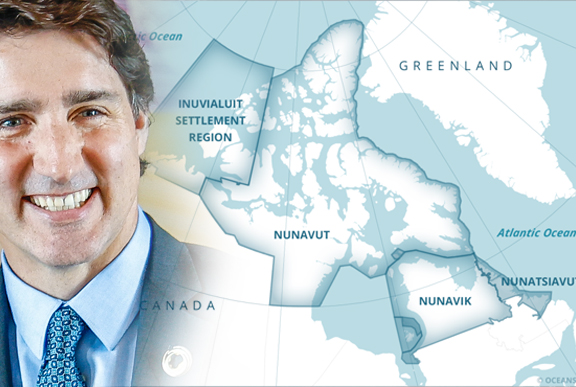The recent announcement of an Arctic Defense Strategy Update indicates a very dangerous line of thinking that risks inflaming an already terrible breakdown in global diplomatic relations and doubles down on Canada’s role within a military confrontation with Russia and China.
The priorities on integrating Canada’s already non-existent sovereignty into supranational systems like NORAD and the AUKUS group (which is also courting Japan to join as we speak), feature a suicidal and absurd line of Hobbesian logic that could result in a lot of devastation to both Canada and the world at large. Beyond structural changes in Canada’s arctic military policy, billions will be spent on new special censors to upgrade the Cold War DEW radar system “to detect, deter and respond to threats quickly and expand the country’s presence and reach across large and remote areas”.
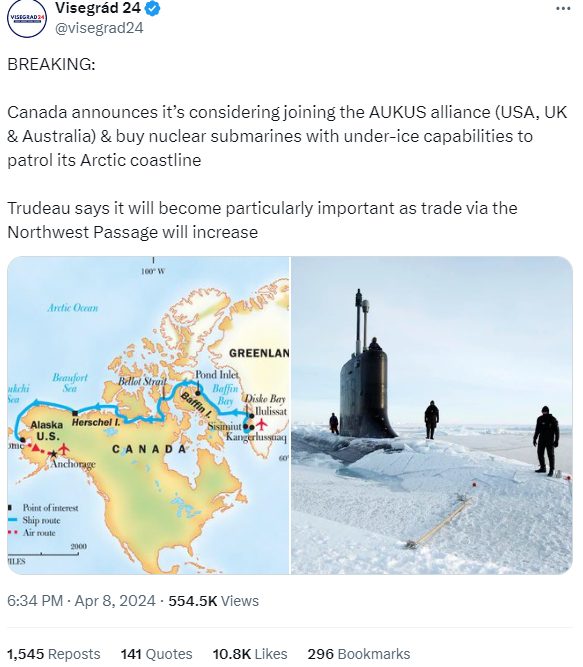
This of course, is a return to the anti-ballistic missile system which Canada’s Liberal Party-led government of 2005 rejected. Sadly, nearly 20 years later, the liberal party has become a very different creature than its 2005 incarnation and now is simply an instrument for a supranational technocratic cult reflecting the ethos expressed by Justin Trudeau in 2015 who described Canada as “The world’s first post nation state”.
Canada is not alone in this Arctic defense upgrade with a parallel $56 billion reform now underway in Norway which recently had US warships making their presence in Norway known for the first time in 65 years. Further, NATO military exercises in the Arctic have increased in intensity over the past year.
A Saner Approach to Arctic Dynamics
From September 11-13, 2023 Russia hosted the annual Eastern Security Forum in Vladivostok, which featured a vast expansion of Russian economic projects across the Arctic and undeveloped Far East region. Over 3,000 projects were discussed ranging from transportation corridors, defense, energy projects, telecommunications, and new cities.
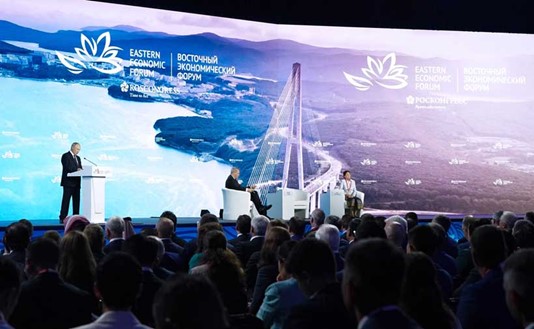
Over 600 of those projects have already begun construction, and deals were signed by leading representatives from dozens of nations. The Polar Silk Road program, led by China, has integrated deeply into Russia’s long-term Arctic strategy, with transit routes from Asia to Europe scheduled to increase by a factor of 200% over the coming few years. Additionally, natural gas pipelines from Russia to its Asian partners have also accelerated with the Power of Siberia 2 pipeline, scheduled to be complete by 2025.
The Arctic region of Russia has provided a unique opportunity to break free of certain confrontational traps, with nations like South Korea, Malaysia, Mongolia, Japan, and India investing heavily alongside Chinese and Russian companies in the development of oil and natural gas projects. Western geopolitical efforts to incite conflict among Pacific nations over territorial disputes with China or Russia have a weak link: the win-win orientation evident in Russia’s resource-rich Arctic. The Polar Silk Road was unveiled in 2019 and has since become a major force in Arctic development shaped by rail, roads, and shipping routes opening up in the Arctic, allowing Asian nations to bypass various volatile maritime choke points.
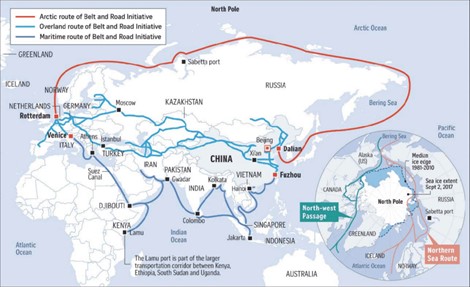
This conjunction of Russia and China’s northern policies around the Polar Silk Road should come as no surprise to anyone who has been paying attention to the close strategic friendship between both countries since the 2015 announcement of an alliance between the Russian-led Eurasian Economic Union and Belt and Road Initiative. This northern extension of the Maritime Silk Road represents a powerful force to transform the last unexplored frontier on the Earth, converting the Arctic from a geopolitical zone of conflict towards a new paradigm of mutual cooperation and development.
Putin gave a speech at a recent BRI forum stating:
“the Great Eurasian Partnership and Belt and Road concepts are both rooted in the principles and values that everyone understands: the natural aspiration of nations to live in peace and harmony, benefit from free access to the latest scientific achievements and innovative development, while preserving their culture and unique spiritual identity. In other words, we are united by our strategic, long-term interests.”
Weeks before this speech Russia unveiled a bold plan for Arctic development during the conference Arctic: Territory of Dialogue which has since grown in leaps and bounds. This program not only extends roads, rail, and new cities into the Far East, but also extends science and civilization into a terrain long thought totally inhospitable. One of the keystone projects driving this program involves the completion of the International North-South Transportation Corridor (INSTC) launched as an Indian-Iranian-Russian program in 2002 and which has been given new life in the last several years.
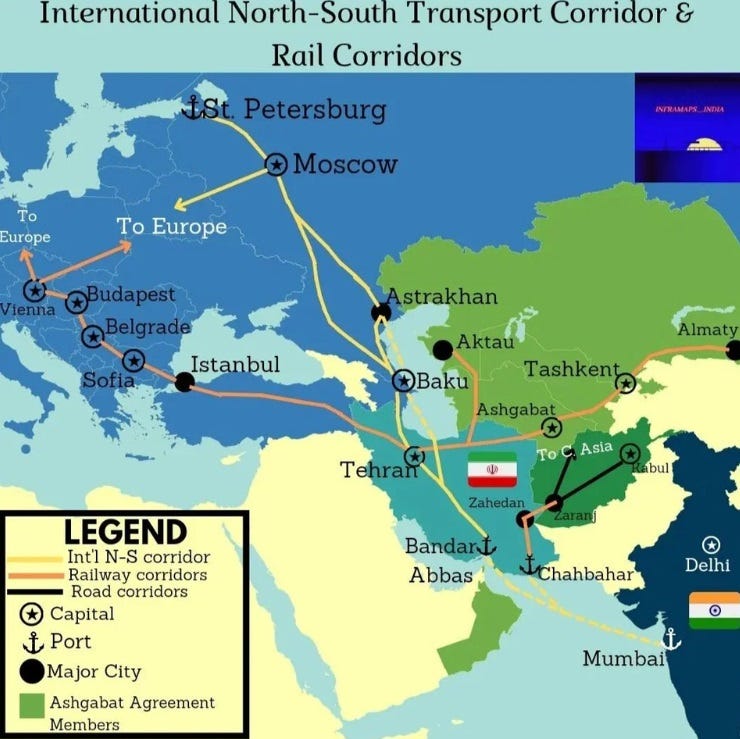
While the West has not built any new cities in several generations, Russia has announced the construction of five major Arctic cities supporting up to 1 million people each in the coming years with Russian Defense Minister Sergey Shoigu leading the plan. Reporting on this program Atle Staalesen wrote in Arctic Today:
“Shoigu sees his masterplan for Siberia as closely connected with the markets in nearby China. But the new cities will also be important for the development of the Arctic, he argues, and makes a reference to the famous 18th Century scientist and writer Mikhail Lomonosov who wrote that “Russian power will grow with Siberia and the Arctic Ocean, […]”. According to Shoigu, Lomonosov did not coincidently connect the Arctic and Siberia. “They should be developed together and not separately,” he underlines, and adds that “the focus on the development of the Siberian region is both timely and reasonable.”
Typically framed as an “anti-BRI” megaproject by small-minded geopoliticians, the INSTC and BRI are really two sides of the same program and should more so be seen as a sister program for Eurasian, Southwest Asian, and even African industrial growth. The INSTC currently enjoys the cooperation of 12 participating nations and has recently seen its northern extension moved from St Petersburg further north to the port of Lavna in Murmansk, Russia. China’s western “middle corridor” branch of the east-west BRI stretching through Xinjiang also features several rail and road corridors that tie directly into the INSTC not to mention the obvious Arctic far east connections.
When fully completed, the INSTC will not only circumvent the NATO-controlled zone of the mediterranean zone, via the overly congested Suez canal, but will cut approximately 10 days and 40% of the transportation costs off the current Suez route.
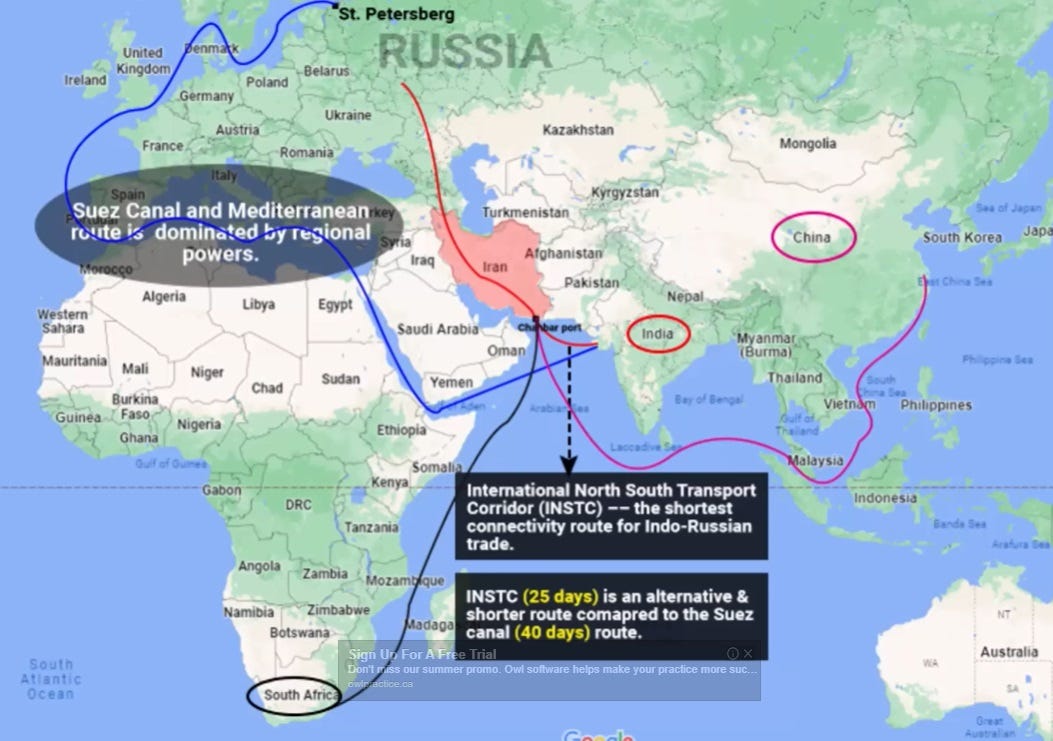
In 2019 China and Russia signed the first scientific cooperation agreement together setting up the “China-Russia Arctic Research Center” as a part of the Polar Silk Road.
While there is no reason why nations of the West (especially members of the Arctic Council) should not also cooperate on these initiatives, another darker paradigm is at play.
These programs are open for anyone to join, but sadly Russia’s membership within the Arctic Council has resulted in isolation, as no other Arctic member state will permit any rational dialogue with the most important and active Arctic nation of the world. Despite trying for years to play a role within the Arctic Council (gaining observer status in 2011) and becoming the world’s second most advanced arctic shipping nation holding three nuclear ships in their arsenal, and innovating the Arctic Silk Road (maritime and land based components) based on creating vast investment opportunities, China has also been “iced out” of the council.

